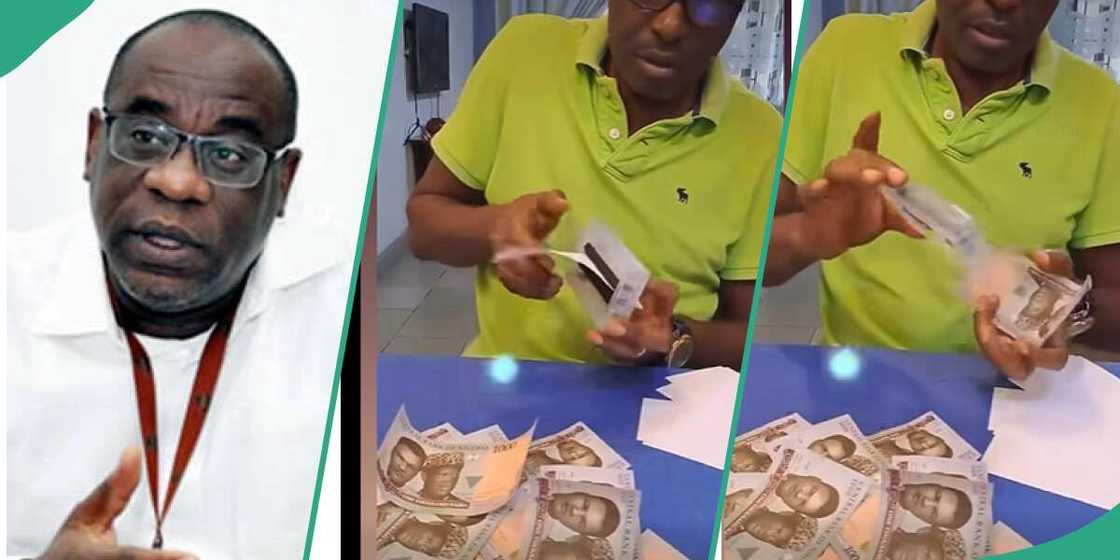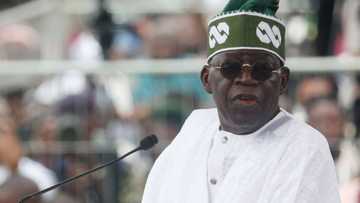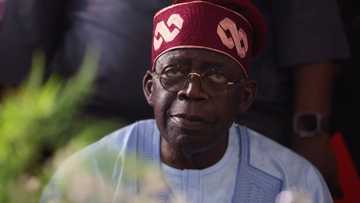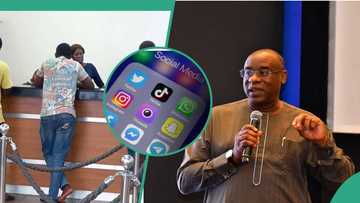CBN Puts Zenith, Access, UBA, Other Banks on High Alert Over $1bn Fake Currency Coming to Africa From Abroad
- The Central Bank of Nigeria has put commercial banks and other financial institutions on high alert over $1 billion fake currency meant for Africa
- CBN's letter to financial institutions directs the banks to make searches about individuals involved in the counterfeiting
- However, a video of a Nigerian man minting fake N1,000 notes has gone viral
PAY ATTENTION: Click “See First” under the “Following” tab to see Legit.ng News on your Facebook News Feed!
The Central Bank of Nigeria (CBN) has launched a probe into an alleged $1 billion currency counterfeit deal involving a Nigerian and other nationals.
A memo dated August 23, 2023, marked confidential and addressed to commercial banks and other financial institutions, gives insight into the investigation.

Source: Facebook
CBN puts commercial banks on high alert over fake $1bn
The letter said the fake dollar is meant for the African market.

Read also
Tinubu gives security agencies September 18 deadline to recover N1.1trn Anchors Borrowers' Programme loan
The memo, signed by Chibuzo Efobi, the Director of the Financial Policy and Regulation Department, was titled Administrative Letter to Banks and Other Financial Institutions: Arrest of Nigerian and Four Nationals for Alleged Involvement in Currency Counterfeiting.
The Guardian reports that the financial institution's regulator said Turkish authorities made the arrests.
Nigerian man arrested alongside other nationals
According to the letter, the Turkish authorities arrested a Nigerian citizen and four other nationals for alleged involvement in currency counterfeiting to $1 billion bound for African countries.
The suspects are named Dele Bolade Samson with Nigerian and Swedish passports.
Others include Ghanaian Kean Kwasi Arhin, a Briton, and Netanel Kakob Weiss, as well as two Swedish nationals.
CBN said:
"Pursuant to Regulation 4 of the Central Bank of Nigeria (Anti-Money Laundering, Combating the Financing of Terrorism and Countering Proliferation Financing of Weapons of Mass Destruction in Financial Institutions) Regulations, 2022, financial institutions are required to take the following measures immediately:

Read also
FG targets domiciliary accounts in Zenith, Access Bank, UBA, others and Nigerians with funds abroad
Conduct searches of their database to determine whether there is any information about the above individuals; check whether they maintain any accounts or hold any funds or economic resources for the persons mentioned above; identify and file suspicious transaction reports to the Nigerian Financial Intelligence Unit (NFIU) and render NIL report to the NFIU where no such records exist."
Video of man printing fake naira notes causes stir
Meanwhile, a video of a Nigerian man printing counterfeit N1,000 notes has gone viral on social media.
The man displayed how users could print the fake notes using a plasma card and a piece of equipment from which he prints the counterfeit notes.
The video, first posted on TikTok, has since gone viral and got Nigerians talking.
It has also accumulated thousands of comments and reactions on the social media platform.
CBN's Director of Communications, Isa AbdulMunmmin, could not be reached for comments.

Read also
“They agree”: CBN to review order requesting Access, UBA, other banks customer’s social media handles
Naira redesign: How to differentiate fake naira notes from genuine one
Legit.ng reported that Since the Central Bank of Nigeria released the new naira notes into circulation, there have been complaints of fake notes that circulated the system, resulting in grave concerns.
However, according to the Central Bank of Nigeria, the Naira banknotes are protected by several security features to recognise genuine notes easily. The distinguishing features that can be identified by touch and visibility are the raised print, the security thread and the watermark. The portrait, lettering and the denominational numerals on the obverse and reverse of the notes are embossed.
To save Nigerians from being defrauded by counterfeiters, Legit.ng has put together several ways to identify a counterfeited banknote.
Source: Legit.ng


